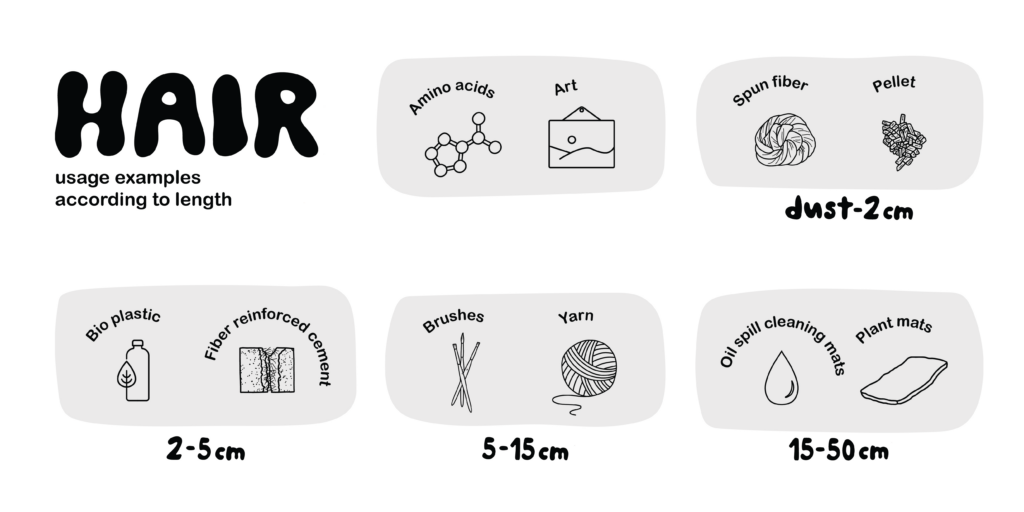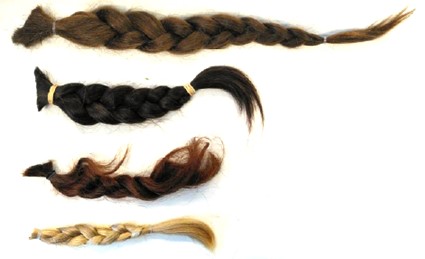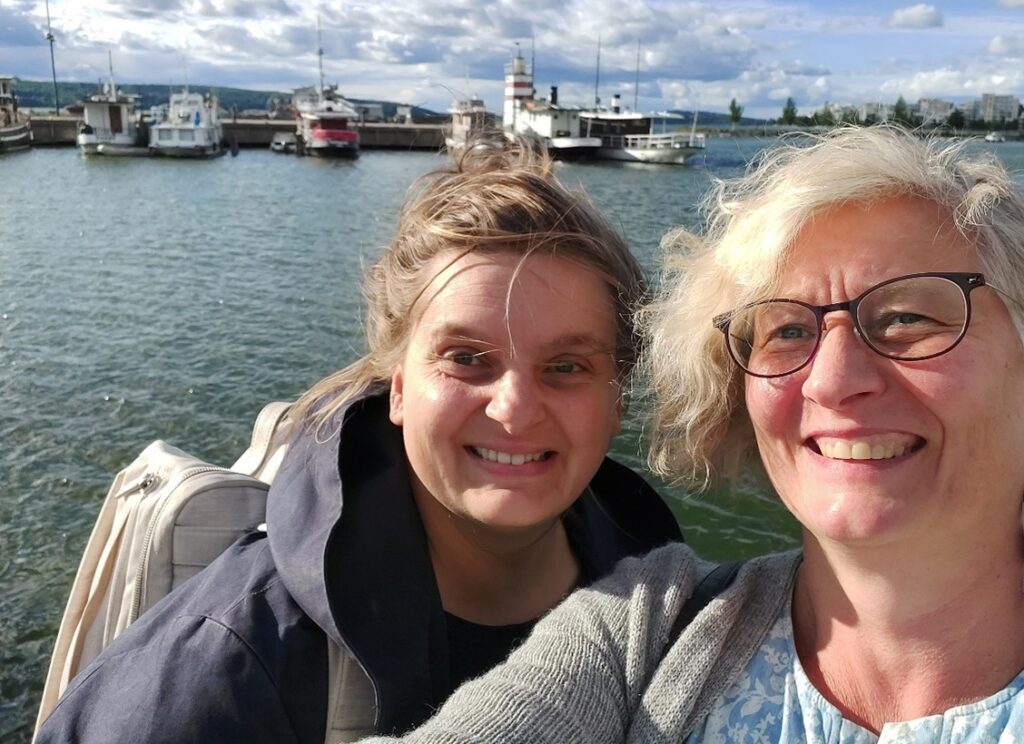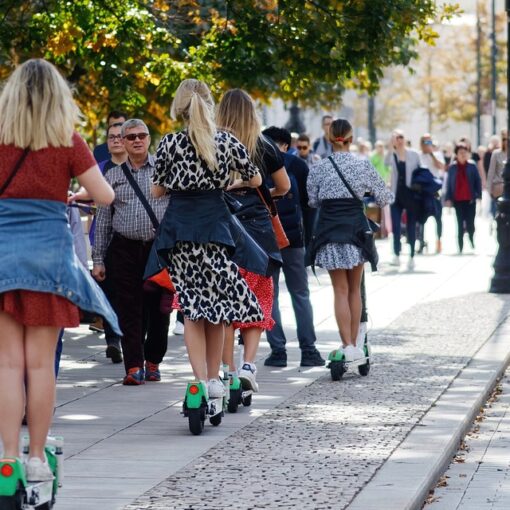Every year 72 million kilos of hair ends up in landfills (Kollar 2022). The inhabitants of the earth are constantly increasing and in 2050 there will be approx. 9.7 billion people on earth (Die Welt 2013) and so, also more hair to dispose. Uncontrolled disposal and incineration are harmful to health and can cause diseases such as tuberculosis or bronchitis (Vijayalakshmi 2003). But can human hair be helpful for other applications and saved from direct disposal?

Researching Possibilities
Part of the Hiukka 2.0 – hair and other organic fibers as a substitute for plastic -project, have been examined and researched the good properties of hair material and where it could be used. On closer inspection, many potentials can be recognized. Due to the inhomogeneity of hair waste, different applications for different lengths can be identified. Human hair can adsorb and release up to 9 times its own weight of oil (Ifelebuegu et al. 2014). Due to this special feature, long hair has been needled into mats and processed into oil mats since the early 2000s by the organization “Matter of Trust” in the USA (Matter Of Trust 2021) as a sustainable alternative to current synthetic products for cleaning oil spills. These needled mats can also be used as fertilizer or plant mats to offer a regional alternative to coconut mats and release growth-promoting substances such as nitrogen and support the future harvests (Jeliazkov 2005). In addition, in China, long hair has been used as an embroidery thread since the 13th century because of its spirituality (Nationalclothing.org 2018). Due to its strength and the high biocompatibility, untreated hair is also suitable for a sewing thread in microsurgery (Eroğlu et al. 2003). Furthermore, long hair can still be used for wigs, brushes, ropes, nets and carpets.

Shorter hair between 1-7cm mixed with cement reduce its cracking up to 92% even with a small addition (Al-Darbi et al. 2006), also a reduced weight and an increased compressive strength are obtained in the concrete. Hair can improve properties in many other composite applications. Due to the good substance absorption capacity of the hair, it can be placed in air and water filter systems with a pre-treatment it is able to filter (Talaiekhozani et al. 2016) formaldehydes (Zaini & Sudi 2018), dyes (Zhang et al. 2020) or heavy metals. Very short hair or hair dust can be used because of the keratin structure. Keratin is the basic protein, it can be extracted and used for tissue engineering, wound care and cosmetics due to the excellent biocompatibility. Furthermore, hair is able to absorb and store information about the wearer and his environment and becomes a tool for biomonitoring (Szynkowska et al. 2015).
Most of the applications are still ideas and results from research projects and are not yet being used industrially, but they give an overview of the far-reaching potential of human hair and support further research.

Hiukka 2.0 – Hair and other organic fiber as a substitute for plastic project develops products from hiukkamaterial (hair and dog fur). Hiukka 2.0 project further develops the product design ideas started by the Hiukka Hyvä environmental project, which was founded by the city of Lahti, European Green Capital 2021 funding.
Authors
Babette Sperling is an MA-Student of Textile Chain Research at Reutlingen University and exchange Trainee for the Hiukka 2.0 project and is interested in exploring the potentials of unused materials for common applications.
Paula Nurminen is working in LAB University of Applied Sciences as a project coordinator and works as a project manager in Hiukka 2.0 project.
References
Al-Darbi, M. M., Saeed, N. O., Ajijolaiya, L. O. & Islam, M. R. 2006. A Novel Oil Well Cementing Technology Using Natural Fibers. Taylor & Francis. Cited 29.8.2022. Available at https://www.tandfonline.com/doi/abs/10.1081/LFT-200056771
Die Welt. 2015. 2050 leben 9,7 Milliarden Menschen auf der Erde. Die Welt. Cited 29.8.2022. Available at https://www.welt.de/wissenschaft/article120583717/2050-leben-9-7-Milliarden-Menschen-auf-der-Erde.html
Eroğlu, L., Güneren, E., Akbaş, H., Demir, A. & Uysal, A. 2003. Using human hair as suture material in microsurgical practice. National Library of Medicine. Cited 29.8.2022. Available at https://pubmed.ncbi.nlm.nih.gov/12582965/
Ifelebuegu, A. O., Nguyen, T. V. A., Ukotije-Ikwut, P. & Momoh, Z. 2015. Liquid-phase sorption characteristics of human hair as a natural oil spill sorbent. PubMed. Cited 29.8.2022. Available at https://www.sciencedirect.com/science/article/abs/pii/S2213343715000330
Jeliazkov (Zheljazkov), V. 2005. Assessment of Wool Waste and Hair Waste as Soil Amendment and Nutrient Source. PubMed. Cited 29.8.2022. Available at https://www.researchgate.net/publication/7492017_Assessment_of_Wool_Waste_and_Hair_Waste_as_Soil_Amendment_and_Nutrient_Source
Kollar. 2022. Human Material Loop. Cited 29.8.2022. Available at https://humanmaterialloop.com
Matter Of Trust. 2021. Hair Mats & Oil Spills. Cited 29.8.2022. Available at https://matteroftrust.org/clean-wave-program/
Nationalclothing.org. 2018. Chinese traditional hair embroidery. Long human hair serves as threads. Cited 29.8.2022. Available at http://nationalclothing.org/asia/39-china/236-chinese-traditional-hair-embroidery-long-human-hair-serves-as-threads.html
Szynkowska, M. I., Marcinek, M., Pawlaczyk, A. & Albińska, J. 2015. Human hair analysis in relation to similar environmental and occupational exposure. Science Direct. Cited 29.8.2022. Available at https://www.sciencedirect.com/science/article/pii/S1382668915300302
Talaiekhozani, A., Talaei, M. R., Yazdan, M. & Mir, S. M. 2016. Investigation of formaldehyde removal from synthetic contaminated air by using human hair. Environmental Health Engineering And Management Journal. Cited 29.8.2022. Available at http://ehemj.com/article-1-232-en.html
Vijayalakshmi, E. 2003. Hair pollution hits Karnataka. Down to Earth. Cited 29.8.2022. Available at https://www.downtoearth.org.in/news/in-disitressi-13180
Zaini, M. A. A. & Sudi, R. M. 2018. Valorization of human hair as methylene blue dye adsorbents. De Gruyter. Cited 29.8.2022. Available at https://www.degruyter.com/document/doi/10.1515/gps-2017-0021/html
Zhang, H., Carrillo-Navarrete, F., López-Mesas, M. & Palet, C. 2020. Use of Chemically Treated Human Hair Wastes for the Removal of Heavy Metal Ions from Water. MDPI. Cited 29.8.2022. Available at https://www.mdpi.com/2073-4441/12/5/1263
Links
LAB. 2022. HIUKKA 2.0 – Hius- ja muu orgaaninen kuitu muovin korvaajana –project site. Cited 6.9.2022. Available at https://lab.fi/en/project/hiukka-20-hius-ja-muu-orgaaninen-kuitu-muovin-korvaajana




